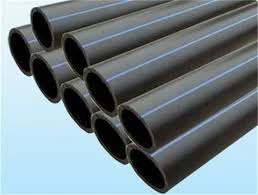Nov . 22, 2024 08:59 Back to list
hdpe sheet thickness
Understanding HDPE Sheet Thickness Key Considerations and Applications
High-Density Polyethylene (HDPE) is a widely used thermoplastic polymer known for its durability, strength, and versatility. Sheets made from HDPE are utilized across various industries due to their excellent chemical resistance, low moisture absorption, and ability to withstand heavy impacts. One of the critical factors in the selection and application of HDPE sheets is their thickness. Understanding the implications of HDPE sheet thickness can help users make informed decisions based on their specific project requirements.
What is HDPE?
HDPE is a type of polyethylene with a high strength-to-density ratio. It is commonly used in manufacturing products that require high strength and longevity. The flexibility of HDPE sheets makes them suitable for various applications, including industrial, agricultural, construction, and food processing industries. Due to its resistance to various chemicals, moisture, and environmental stressors, HDPE can be employed in a range of settings, from outdoor environments where exposure to UV rays is a concern to specialized industrial applications.
Importance of Sheet Thickness
The thickness of HDPE sheets typically ranges from as thin as 1/8 inch (3.2 mm) to 2 inches (50.8 mm) or more. The choice of thickness plays a significant role in determining the sheet’s performance and suitability for specific applications. Here are some factors to consider regarding HDPE sheet thickness
1. Load Bearing Capacity Thicker sheets are generally better suited for applications that require higher load-bearing capacities. For example, in construction applications where sheets are used for flooring or structural components, a thicker HDPE sheet can withstand more weight and resist deformities.
2. Impact Resistance Thicker HDPE sheets provide improved impact resistance, making them ideal for areas where they may be subject to mechanical stress or physical impact. Industries such as manufacturing and transportation often benefit from using thicker sheets to protect critical machinery or surfaces.
3. Thermal Stability Thicker HDPE sheets often exhibit better thermal insulation properties, helping to maintain optimal temperatures in various applications. This is particularly useful in agricultural settings where climate control is necessary for perishable goods.
4. Chemical Resistance While all HDPE has notable chemical resistance, the thickness can influence its overall performance in harsh environments. Thicker sheets may offer additional protection against certain corrosive substances, making them ideal for chemical containment projects.
hdpe sheet thickness

5. Cost-Effectiveness Thicker sheets generally come at a higher price point, which is an essential consideration for any budget-conscious project. Users need to weigh the benefits of increased durability and performance against the costs involved.
Applications of HDPE Sheets
Given the diverse applications of HDPE sheets, the choice of thickness typically aligns with the specific requirements of a project. Some common applications include
- Industrial Packaging HDPE sheets are often utilized in creating containers or manufacturing pallets. Thicker sheets may be used for heavy-duty packaging solutions to enhance durability.
- Construction Material In the construction industry, HDPE sheets serve as a waterproof barrier in foundations and roofing systems. For load-bearing applications, thicker sheets are preferred for enhanced strength and longevity.
- Signage and Display HDPE sheets are popular for outdoor signage due to their weather resistance. However, thinner sheets may be chosen for lightweight display boards, while thicker options are ideal for permanent installations.
- Agricultural Use In agriculture, HDPE sheets can be used for lining ponds, silos, or as windbreaks. The required thickness will depend on the environmental conditions and anticipated wear and tear.
- Food Processing HDPE is approved for food contact, making it useful in food processing facilities. The thickness can vary based on whether the sheets are used for storage, conveyor systems, or countertops.
Conclusion
Selecting the appropriate thickness for HDPE sheets is crucial for ensuring their efficacy and longevity across various applications. Understanding the properties and benefits of different thicknesses will enable users to make informed decisions that align with their specific project needs. From construction to agriculture and everything in between, HDPE sheets continue to be a reliable choice, combining durability, versatility, and resistance to various environmental factors. When planning your next project, consider the implications of HDPE sheet thickness, and choose wisely to maximize performance and longevity.
-
High-Quality PPR Pipes and Fittings Durable ERA PPR & PVC PPR Solutions
NewsJul.08,2025
-
Black HDPE Cutting Board - Durable, Non-Porous & Food Safe HDPE Plastic Cutting Board
NewsJul.08,2025
-
High-Quality CPVC Panel Durable HDPE & PVC Panels Supplier
NewsJul.08,2025
-
Double PE Welding Rod Supplier - High Strength, Durable & Versatile Welding Solutions
NewsJul.07,2025
-
High-Quality PVC-O Pipe Supplier Durable 75mm PVC Pipe & Connections Leading PVC Pipe Company
NewsJul.07,2025
-
HDPE Drainage Pipe Supplier – Durable & Corrosion-Resistant Solutions
NewsJul.06,2025

